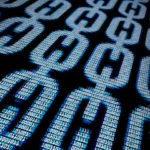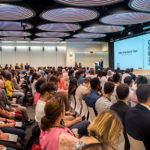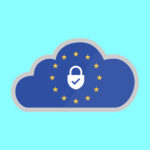 In the world of distance running, the UK’s Great Run is huge. The series of events at various locales througout the British Isles draws hundreds of thousands of participants each year, the majority of them running for charity.
In the world of distance running, the UK’s Great Run is huge. The series of events at various locales througout the British Isles draws hundreds of thousands of participants each year, the majority of them running for charity.
With such high engagement, the races boast some big-name partners, too — among them, sportswear giant PUMA, which sees Great Run as an opportunity to connect and communicate with consumers via a branded, on-site presence. “The important factor for [PUMA] was to monitor engagement and reach consumers across social channels,” said Lauren Rutherford, production account director for Innovision, the London-based special-events company with which PUMA partners to create its presence at each Great Run program. “We always look to amplify the work we do via social channels. However, this was the first opportunity for social to be as key as retail in prominence and strategy.”
PICTURE MARKETING
Looking for fresh ways to connect with consumers during the 2015 runs, Innovision turned to Headoo, a French firm that helped pioneer “picture marketing,” which involves using professional-caliber photos taken on the spot inside stores and at events to capture experiences between brands and their customers — as well as track the data generated via photo shares. Rather than use an app, Headoo software works directly from a device’s camera — or from a photo booth or tablet — with the installation of a Headoo email address to which photos can be sent. The photo subjects’ email addresses are also collected, and they are invited to view their photos on a branded microsite. “Each client receives a mail back with a link to their photo on that branded page, from which they can share on social media,” said Maia Fontaine Leonard, vice president of Headoo.
People invited to view their own photos do so 95 percent of the time, according to Leonard. As they share them with others, the originating store or event can track not only social-media traffic but 70 different metrics about both visitors and the campaign itself, from the name, gender, age, and ZIP code of each visitor to key influencers, banner click-through rates, word clouds (derived from photo comments), and cost-per-impression comparison.
U.K. retailer Marks & Spencer was an early client, as were opticians, corporate events, and galas. By the time Innovision signed on for PUMA’s Great Run presence, Headoo’s client list included Mitsubishi, Google, Dove, Barclays, and Peugeot.
‘I WAS THERE, I DID IT’
For the 2015 Great Run events, Innovision set up PUMA retail spaces that Rutherford describes as “custom-built popup shops situated at a key point near the finish line.” At three events, Innovision also installed “strong brand imagery” that included a race-clock screen — and an enormous image of Jamaican sprinter Usain Bolt — in front of which racers could have their photos snapped while posing or hamming it up. Those photos then were posted on a branded PUMA web page.
“People train for months to do the race, and they’re really proud of it,” Leonard said. “They were really happy to have a nice memory they could share, that said, ‘I was there, I did it, I finished the race and that’s my score.’”
But those exuberant, sweaty finish-line photos served another purpose, too. They enabled Innovision and PUMA to track participants as they shared their images. At the Morrisons Great Newham London Run in July 2015, Innovision collected 264 emails for 328 photos, which in turn generated 319,000 shares on Facebook and 2,560 unique visitors to the branded PUMA platform. For another event, the 13-mile Morrisons Great North Run in northern England, 300 finish-line photos generated 515,000 Facebook impressions and 2,600 unique visitors. Overall, the average click-through rate on the PUMA banner (on the branded page) was 60 percent. “That’s extremely high,” Leonard said. “Usually when we do an event, our average [banner clicks] are 14 percent, which is already huge. We’d never seen 60 percent before. I guess people wanted to look at shoes!”
Rutherford added: “It was the first time we’d used social metrics as part of PUMA’s activation at the Great Run series, and it opened up a new perspective on demographics, behavior, and engagement, with the product click-through links to PUMA retailers on the Headoo platform. The analytics and insights it gave us were invaluable. The information was immediately available, straightforward, and adaptable to what metrics we needed to see and evaluate.”
Headoo charges a flat rate of $1,200 to $2,100 per platform, and can keep photos posted online for up to a year. The company now works five to six events per week, with U.S. clients ranging from the Emmy Awards to medical conferences such as the American Society of Hematology’s 2015 Annual Meeting & Exposition in Orlando this past December, where Novartis AG had a photo booth (see Breakout, at right). “It’s about creating a unique link with each customer. Your customer becomes your brand advocate on their own social media,” Leonard said. “You’re able to track and measure exactly who your customers are, who they shared the content with, the word of mouth produced on social media, and how many people arrived on the [branded] page and then interacted with your banners.”




